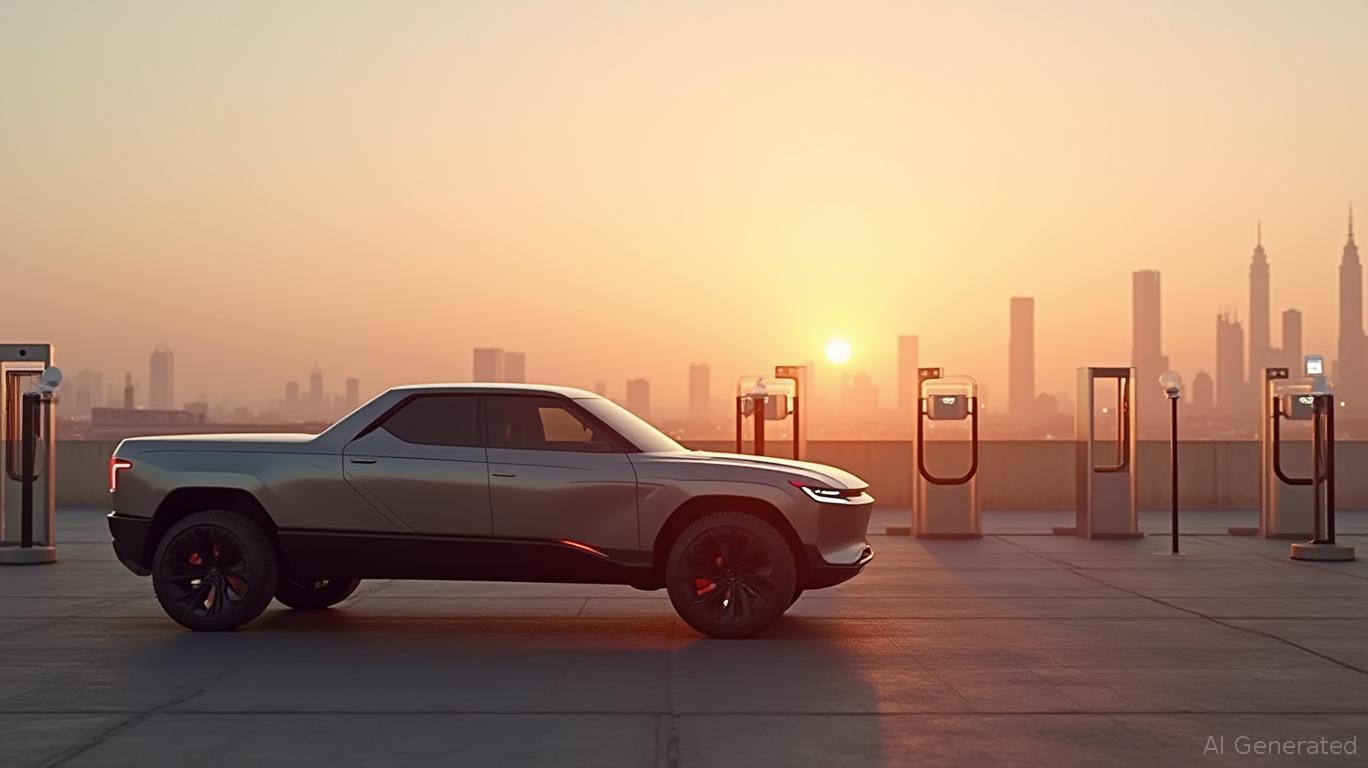Rivian's Debt Gambit: Navigating Tariffs and EV Volatility
The electric vehicle (EV) market is in a state of high-stakes flux, and
finds itself at the center of it. After slashing its 2025 delivery forecasts—from 46,000–51,000 to 40,000–46,000—and announcing a $2 billion high-yield bond refinancing effort at a staggering 10% yield, the question looms: Is this a strategic pivot to weather trade headwinds, or a desperate bid to stave off financial distress? Let's dissect the risks, opportunities, and what investors must watch now.The Refinancing Crossroads: A 10% Yield Says It All
Rivian's plan to refinance $2 billion of maturing debt in 2026 at a 10% interest rate is a stark admission of the challenges it faces. This eye-popping yield reflects investor skepticism about its ability to deliver on promises amid rising trade policy risks and supply chain fragility. To put this in context, the average yield on U.S. high-yield bonds stood at 8.5% in April 2025—up sharply from February's 7.1%—as tariff fears and economic uncertainty pushed risk premiums higher.
The company's revised delivery targets are a red flag. A 10% reduction from initial guidance suggests deeper demand issues than previously acknowledged. Even with Q1 2025's record demo drives and gross profit milestone, the math remains grim: Rivian's cash burn and negative NOPAT (-$4.6 billion in 2024) highlight its precarious financial footing.

The Triple Threat: Tariffs, Supply Chains, and Demand
1. Tariff Triggers:
President Trump's proposed 25% tariffs on imported vehicles and components could add $5,000+ to Rivian's per-vehicle costs, eroding margins. With 80% of its supply chain tied to U.S. manufacturers, localization is a double-edged sword—costs stay high, but reliance on volatile global trade deals is reduced.
2. Supply Chain Strains:
Despite the shift to U.S. suppliers, Rivian's Q1 delivery delays (e.g., a customer waiting 4.5 months for an R1T) and quality control issues (e.g., AC/DC charging malfunctions) reveal inefficiencies. The Seattle delivery center's 20–120 vehicles/week output underscores a lack of scale compared to rivals like Tesla.
3. Demand Dilemma:
While Rivian's R1S became California's top luxury SUV in Q1, broader U.S. EV demand faces headwinds. Rising interest rates, inflation, and trade-driven price hikes could deter buyers. Competitors like Tesla's Cybertruck and Ford's F-150 Lightning are already snapping up market share.
Opportunities in the Junk Bond Juggernaut
The high-yield market isn't entirely hostile. Despite April's yield spike, credit spreads (the premium over Treasuries) remain manageable at 426 basis points, and defaults are historically low (1.3% in Q1). This creates an opening for Rivian to lock in financing now—if it can prove its long-term viability.
1. Junk Bond Recovery Potential:
The U.S. high-yield market delivered an 8.2% total return in 2024, outperforming Treasuries and investment-grade bonds. If the Federal Reserve softens its rate stance (as hinted by 2024's cuts), yields could dip further, easing refinancing costs.
2. Localization as a Lifeline:
By doubling down on U.S. suppliers, Rivian could mitigate tariff risks and build domestic EV ecosystems. Its partnership with Volkswagen—secured after Q1's strong performance—provides $1 billion in capital and software expertise, critical for scaling production.
3. EV Demand's Long Game:
Global EV sales are still on track to hit 25% of auto sales by 2030, per most forecasts. Rivian's focus on premium off-road and adventure vehicles positions it to capitalize on niche demand, provided it can stabilize margins.
The Investor's Checklist: What to Watch Now
- Creditworthiness: Track Rivian's free cash flow (FCF) and interest coverage ratio. A negative FCF and coverage ratio below 1 signal distress.
- Trade Policy Exposure: Monitor tariff developments. A delay or rollback of Trump's levies could slash costs, while escalation would deepen losses.
- Valuation Reality Check: Rivian's valuation assumes a near-quadrupling of U.S. EV market share by 2035. Compare this to Tesla's dominance and legacy automakers' EV ramp-up.
Final Verdict: Strategic Move or Distress Signal?
Rivian's debt refinancing is a high-risk, high-reward gamble. On one hand, it secures short-term liquidity and buys time to localize supply chains and improve quality. On the other, a 10% yield implies investors see a high chance of default unless operational and financial metrics turn sharply positive.
Investment Action:
- Aggressive Investors: Consider a small position if the bond issue prices at the lower end of its yield range (e.g., 9.5% or below), signaling market optimism.
- Wait-and-See: Hold off until Rivian proves it can hit revised delivery targets and stabilize margins.
- Avoid: If trade tensions escalate or FCF deteriorates further, this is a value trap.
The EV revolution isn't stopping, but Rivian's path to profitability is littered with potholes. This debt deal is a critical test—investors must decide whether the risks are worth the ride.
The clock is ticking. Time to decide: Is Rivian a visionary leader or a cautionary tale?

Comments
No comments yet